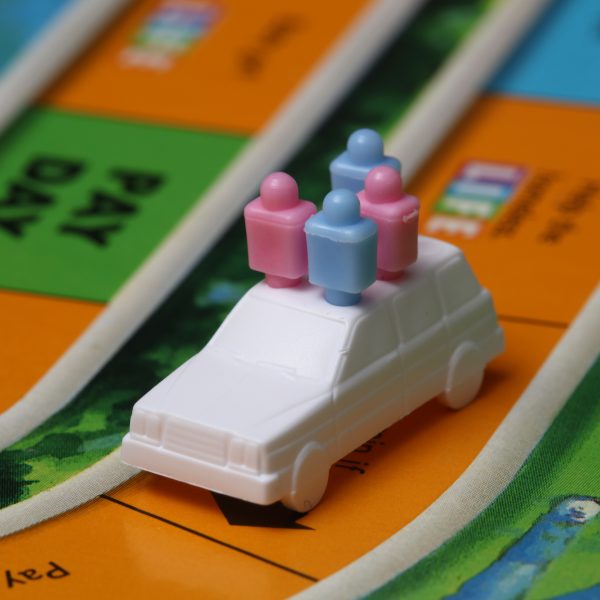Is it time to abolish ‘big feelings’ from our early childhood educators dictionary?

“Molly’s not coming to work today, her dog died and she’s experiencing some ‘big feelings”.
If we would not use this phrase whilst speaking about adults, why do we use it so commonly with children?
I have heard big emotions used when a child was incredibly excited, another time when they upset as their family left at drop off time, and when they were angry that a child had stepped on their castle.
How confusing to a growing brain to feel an abundance of emotions and know them all as ‘big feelings’.
When children are deeply feeling an emotion, we could help them to understand and regulate further by labelling that emotion. “Did James take your car Molly? It looks like that upset you. Are you feeling sad?”.
Dr Dan Siegel, author of The Whole Brain Child, coined the phrase “name it to tame it” to describe this process. Psychologist Sarah Conway has described the positive benefits of labelling emotions for children including expanding their vocabulary, making your child feel validated and understood, and building empathy. Iit can also allow adults to work alongside the children to either listen or plan solutions.
The term ‘emotional literacy’ is the ability to describe and understand emotions, and whilst this is mainly developed in children aged three to five years of age, children’s emotional literacy vocabulary is developed before they learn to talk. Having emotional literacy is an integral part of a child’s social development.
The Queensland Government has stated that one of the ways to build a child’s emotional intelligence is by ensuring that the adults in their life label their own emotions, naming feelings, reading stories, and talking about how others might feel.
What phrase could replace big feelings?
I simply think ‘emotions’.
Children are human beings who are bound to experience a range of emotions throughout the day.
They will feel some emotions more strongly than others. We could also help children to identify which emotion they are experiencing and provide a label for the emotion.
We could remove the word ‘big’ too, as I commonly hear educators’ comment that a child is experiencing ‘big angry’.
Firstly, these sentences are not grammatically correct, and secondly, some children are learning that every emotion they have is labelled ‘big’. Imagine being a child, and hearing that your emotions are ‘big’, would you feel in control, would you feel regulating these emotions as a manageable task?
When we take away the adjectives, and just refer to their feelings as ‘emotions’, it reduces a stigma and makes the feelings seem normal (which they are).
As adults we cannot determine whether a feeling is big, overwhelming, or quite small. To label all emotions as ‘big’ is confusing. How do we determine whether the emotion is big? Whether the child is crying, screaming, yelling? A child could be experiencing a range of emotions, and if we label it as ‘big angry’ they are misunderstood.
The anger iceberg theory describes anger as a secondary emotion. If we are to label a child as angry, when in reality they are feeling a host of other emotions under the water of their anger iceberg, we are doing the child a disservice. We are also unable to recognise what has caused their anger, and thus they will continue to feel ‘angry’ until we can differentiate the root emotion behind their anger.
Imagine if we noticed a small child crying and asked why they were upset, with the proper terminology they could explain they are feeling shy about an upcoming event or maybe they’re feeling lonely after another child excluded them.
For years, we have been taught the importance of teaching children to label their own body anatomy, but how about their mental well-being? Isn’t it just as important they can label their emotions too?
What can we say instead of ‘big feelings’?
Example: They have been experiencing some big emotions today!
Solution: They are feeling angry and overwhelmed today.
Example: You look like you are going through some big feelings.
Solution: You look upset, are you feeling disappointed/lonely/hurt?
Example: They are feeling big angry.
Solution: They are furious because … (their friend took their toy)
Example: They are going to school and going through some big feelings.
Solution: They are transitioning to school, and are feeling a little nervous.
We could go one step further to provide children with solutions to these feelings – ‘I can see you are angry that your friend said an unkind comment, let’s go and draw how we feel/throw a ball to release our anger/take some deep breaths to calm our body’.
Moreover, I think it’s time to abolish the phrase ‘big feeling’ and ‘big emotions’, let’s just call them emotions or feelings. No need for the word big. If we do not use these terms with an adult, there is no need to use them with a child.
Popular

Workforce
Policy
Quality
Practice
Provider
Research
ECEC must change now, our children can’t wait for another inquiry
2025-07-02 07:47:14
by Fiona Alston

Workforce
Practice
Provider
Quality
Research
Supporting successful transitions: Big moves, big feelings
2025-06-26 11:00:30
by Fiona Alston

Quality
Practice
Provider
Research
ECEC in focus - Una Springwood’s intergenerational initiative brings young and old together through connection and care
2025-06-30 10:00:45
by Contributed Content












